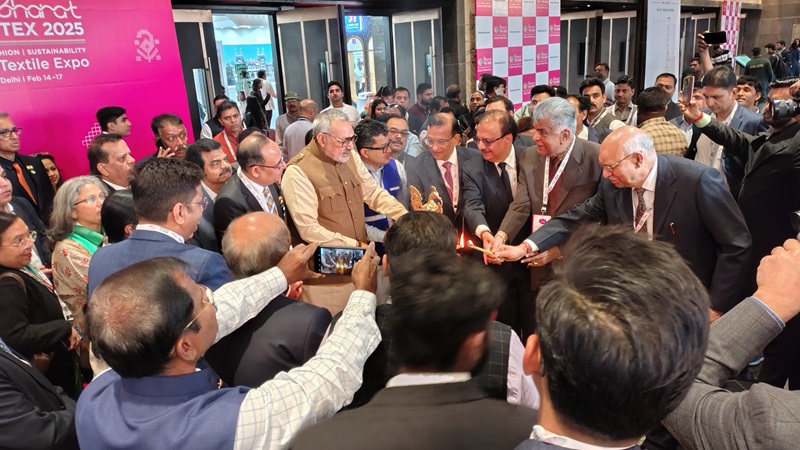FW
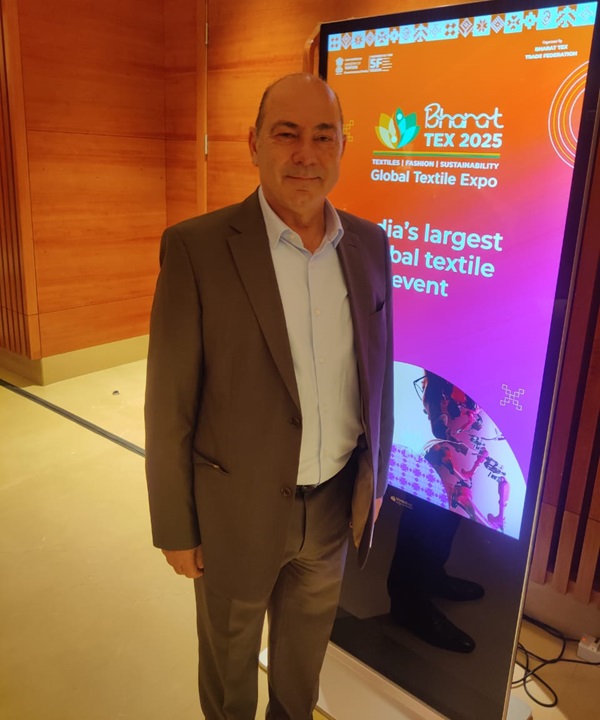
The Indian textile industry stands at a critical juncture. As global dynamics shift, the nation has a unique opportunity to ascend to a position of global leadership. This transformation, however, hinges on embracing sustainability, digitalization, and strategic collaboration, as emphasized by Cem Altan, President of the International Apparel Federation, while speaking at one of the knowledge sessions during Bharat Tex 2025.
Beyond Buzzwords: The cornerstones of future success
Altan's message was clear: the traditional model is no longer viable. "The textile and apparel landscape is undergoing a radical shift," he asserted. "Sustainability, digitalization, and automation are not optional; they are the cornerstones of future success." India, with its vast domestic market and established textile infrastructure, possesses immense potential. However, Altan stressed the need for a more outward-looking approach. "India must aggressively target export markets," he declared, highlighting the necessity of a focused marketing strategy to capture global demand.
Bridging the Gap: Supply chain integration and industrial clusters
A key challenge Altan identified is the need for improved supply chain integration. While acknowledging the presence of large, vertically integrated companies in India, he pointed to accessibility as a major hurdle. "International buyers often struggle to connect with the right suppliers," he explained. His solution? Investing in robust industrial clusters. "These clusters will foster collaboration, streamline supply chains, and simplify the sourcing process for global customers," he argued. This strategic clustering, combined with digitalization, will create a more transparent and efficient ecosystem, attracting international investment and driving export growth.
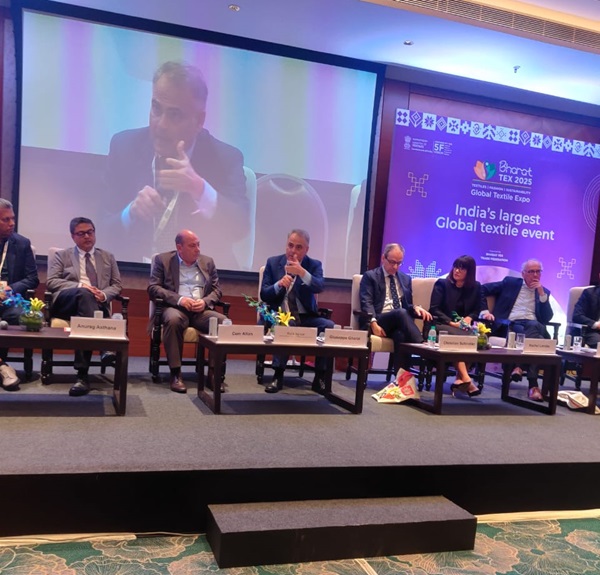
Inspiring a New Generation: The entrepreneur's journey
Altan's address resonated deeply with industry stakeholders. Young entrepreneurs, in particular, found his vision inspiring. Anaya, a budding designer with a passion for sustainable fashion, sought Altan's advice on launching her eco-conscious clothing line. "Focus on building strong relationships," he counseled. "Connect with like-minded individuals and organizations. Leverage technology to optimize your operations and minimize waste. Every step towards sustainability is a step in the right direction."
From Vision to Reality: Anaya's sustainable success story
Anaya's story exemplifies the transformative potential of Altan's vision. Embracing his guidance, she prioritized collaboration, working closely with local suppliers committed to sustainable practices. She also integrated digital tools into her design and production processes, enhancing efficiency and reducing her environmental footprint. Months later, at the subsequent Bharat Tex conference, Anaya proudly showcased her collection – a testament to the power of sustainable innovation. Her garments, crafted from recycled materials and produced with minimal environmental impact, garnered significant attention, demonstrating the growing demand for eco-friendly fashion.
The narrative of the Indian textile industry is being rewritten, with innovation, digitalization, and a deep commitment to a sustainable future. This transformation, driven by the insights, promises to position India as a dominant force in the global textile landscape.
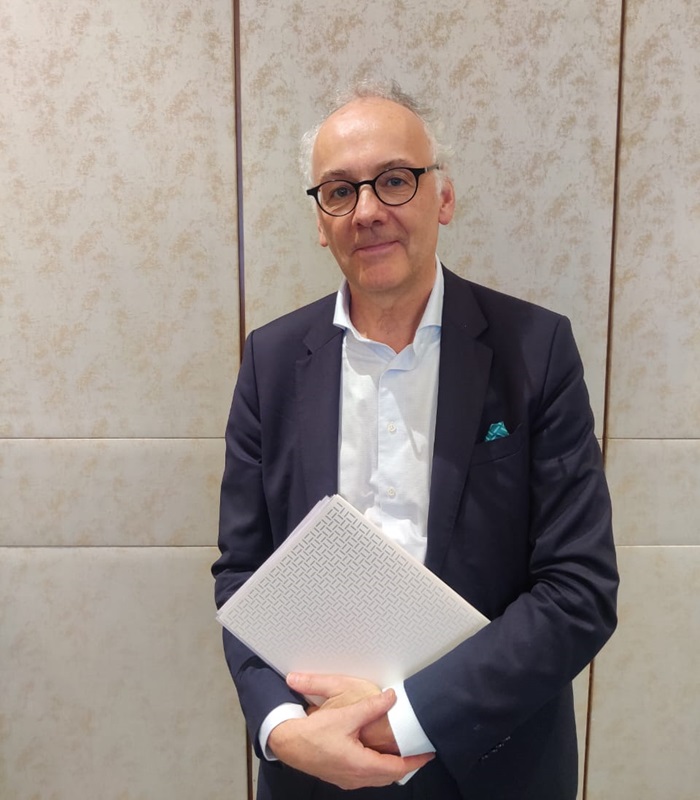
The global textile industry is undergoing a significant transformation, driven by evolving consumer demands, stricter regulations, and increasing pressure for sustainable practices. Dirk Vantyghem, Director General of Euratex(the European textile and apparel association) discusses a complex landscape shaped by sustainability imperatives and shifting global trade dynamics.
EU sets the pace for sustainable textiles
The European Union is emerging as a key driver of change, setting new standards for textile products entering its market. Vantyghem emphasizes the EU's commitment to enhancing quality and minimizing environmental impact, regardless of production origin. This translates to stricter requirements for recyclability, durability, transparency, and a significant reduction in harmful chemicals. With regulations slated for implementation in 2026, Vantyghem's message to international partners, including key players like India, is clear: compliance with these standards is non-negotiable for market access. This proactive approach positions Europe as a leader in sustainable textile production, compelling global manufacturers to adapt their practices.
The global sustainability imperative
While acknowledging the progress made by many European textile companies in adopting sustainable practices, Vantyghem recognizes the global nature of the challenge. He stresses that sustainability is not a competition between regions but rather a collective effort. The focus, he argues, should be on incentivizing and rewarding companies that invest in sustainable solutions, fostering a market environment that values responsible production. This approach encourages innovation and drives industry-wide adoption of eco-friendly technologies and processes.
Trade tensions and market volatility
The textile industry faces additional headwinds from global trade tensions and the potential for trade wars. Vantyghem expresses concern about the negative impact of such uncertainties on business confidence and global trade flows. He underscores the importance of stable international relations for fostering a healthy and predictable market environment. This stability is crucial for businesses to make long-term investments in sustainable practices and technological advancements.
A call for industry-wide transformation
Vantyghem's insights paint a picture of an industry at a critical juncture. The need to adapt to evolving regulations, embrace sustainable practices, and navigate geopolitical complexities is paramount. As Europe leads the charge towards a more sustainable textile sector, global producers must prioritize innovation and compliance to remain competitive. The future of the textile industry hinges on its ability to embrace responsible practices and create a circular economy that minimizes environmental impact.
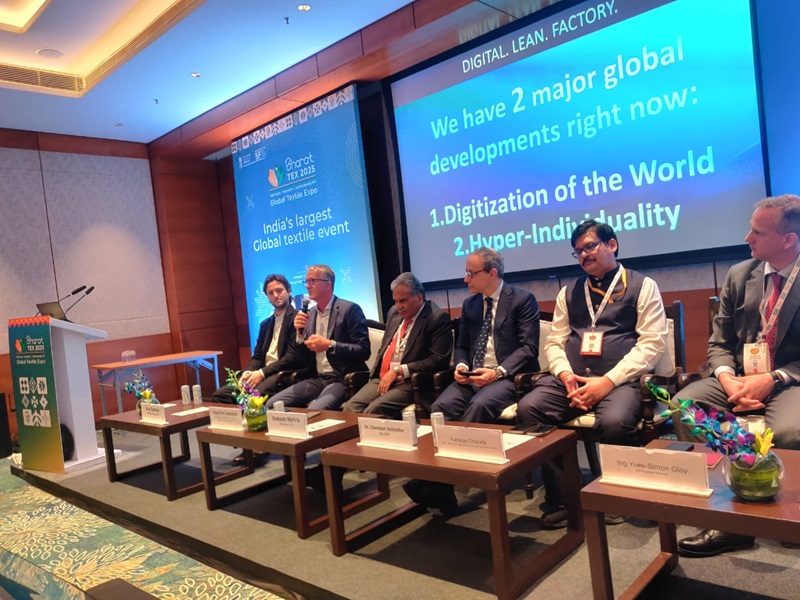
Joachim Hensch, a German Consultant, ex-MD Hugo Boss factory in Turkey, having transformed a factory consisting of 4000 workers into a smart factory, addressed industry professionals, during a Knowledge Session on Smart Manufacturing & Digitalisation during Bharat Tex, offering valuable insights into the transformative power of smart manufacturing and digitalization.
The rise of Hyper-Personalization
He began by emphasizing the critical shift away from traditional mass production towards a model centered on hyper-individuality. "We are no longer in an era where one-size-fits-all products dominate the market," Hensch stated, highlighting the growing consumer demand for personalized experiences. This shift, driven by the digital age, presents both opportunities and challenges for manufacturers. Meeting these individualized needs while maintaining profitability requires a fundamental rethinking of production strategies.
The power of the Digital Twin
A key concept Hensch introduced was the "digital twin" in manufacturing. Using Tesla's production line as an example, he explained how vehicles are capable of self-checking during assembly. "This is not just about quality control at the end of the line; it's about integrating intelligence into the manufacturing process itself," he noted. This proactive approach, characteristic of smart manufacturing, leverages technology and human oversight to ensure quality and efficiency throughout the production lifecycle. The digital twin allows manufacturers to simulate, analyze, and optimize production processes before physical implementation, leading to improved quality, reduced costs, and faster time-to-market.
Democratization of automation
Hensch showcased several innovations reshaping the manufacturing sector, including the increasing accessibility of autonomous robots. He cited the dramatic reduction in cost and increased functionality of these robots, making them viable for a wider range of applications. The plummeting price of robotic solutions is democratizing access to automation, enabling smaller manufacturers to compete with larger players and enhance their productivity.
The dawn of Humanoid Robotics
The presentation also explored the potential of humanoid robots, particularly Tesla's Optimus, to revolutionize factory operations. Hensch projected significant production numbers for Optimus, signaling a broader trend towards integrating advanced robotics into everyday manufacturing processes. The introduction of humanoid robots promises to further automate tasks, improve efficiency, and potentially reshape the manufacturing workforce.
The cultural imperative of Digital Transformation
Hensch emphasized that digital transformation is not just about technology; it requires a significant cultural shift within organizations. "Digital is not just a trend; it is a fundamental part of our lives," he asserted. He urged companies to adapt their production strategies to meet the demands of a fast-paced, consumer-driven market that expects rapid delivery and customization. This requires a shift in mindset, embracing data-driven decision-making, agile methodologies, and a culture of continuous improvement.
Adapt or be left behind
The session concluded with a stark reminder of the competitive landscape. Hensch highlighted the success of companies like Shein and Amazon, which leverage digital technologies to connect vast networks of factories and offer unprecedented production speeds. He warned that manufacturers who fail to embrace digital transformation risk being left behind. "Is your production ready for this?" he challenged the audience, stressing the urgency of adopting smart manufacturing and digitalization to remain competitive in the global market. Hensch's message was clear: in the age of hyper-personalization and rapid technological advancement, adaptation is not just an option, it's a necessity.
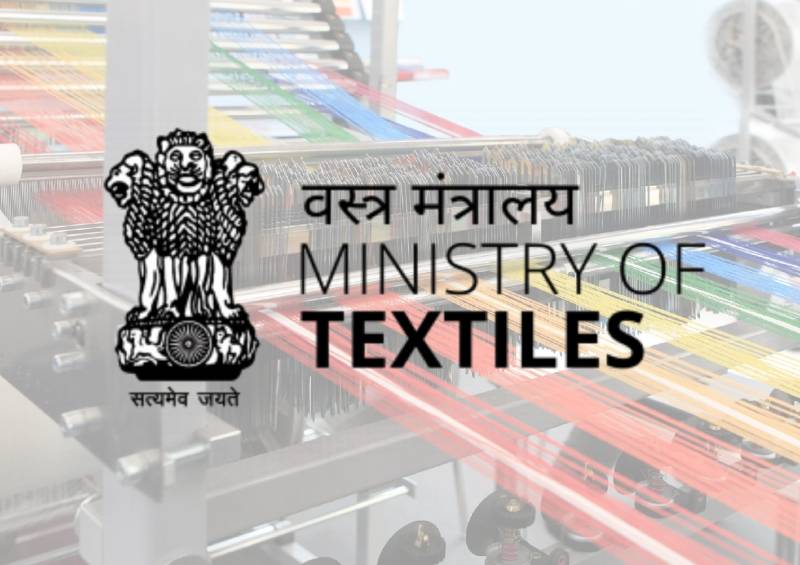
In a dynamic showcase of India's textile prowess, Yogesh Kansal, Additional Secretary of the Ministry of Textiles, addressed in one of the knowledge sessions during Bharat Tex 2025, an event that has a global audience from 120+ nations, alongside 5,000+ exhibitors. This event underscored the Ministry's commitment to transforming India into a dominant force in the global textile landscape.
A three-pronged strategy for growth
Kansal articulated the Ministry's three-pronged strategy: bolstering trade, attracting investment, and strengthening the domestic market. He emphasized India's position as a leading textile and apparel exporter, setting an ambitious target to more than double export figures within the next five years. The palpable enthusiasm at the exhibition signaled strong potential for achieving this goal.
India's unique textile ecosystem
India's textile ecosystem, uniquely encompassing the entire value chain from raw fiber to finished garment, was highlighted as a key strength. "We export raw cotton, fabrics, and designs," Kansal stated, emphasizing India's comprehensive capabilities. With a rich, five-millennia-long textile heritage, India consistently ranks among the world's top five nations in key textile metrics, including apparel exports and the overall scale of its textile sector.
Balancing domestic demand and global exports
The Ministry recognizes the importance of a robust domestic market, which is experiencing impressive annual growth of 7-8 per cent. This dual focus on domestic consumption and export markets strategically positions India for global success. "We are home not just to natural fibers but also to man-made fibers," Kansal added, showcasing the breadth and depth of India's textile production capacity.
Supportive government policies and stable macroeconomic conditions
Government stability and supportive policies are crucial enablers of this growth. Kansal emphasized the stable political environment, low inflation, and favorable macroeconomic conditions that contribute to India's journey towards a $5 trillion economy. He showcased key Ministry initiatives, including the PM Mitra scheme and the National Technical Textile Mission, designed to enhance the competitiveness of the Indian textile industry.
Incentives and Support Mechanisms for Stakeholders
Kansal proactively engaged stakeholders, outlining the extensive range of subsidies and support mechanisms available at both central and state government levels. He explained the synergistic approach, noting, "If the federal policy is supporting a Mitra park, the state-level policy is providing direct capital subsidies and other incentives to reduce manufacturing costs," demonstrating a coordinated effort to optimize support for the sector.
A vision for long-term global leadership
The Ministry of Textiles' vision extends beyond mere economic growth; it is about crafting a narrative of resilience, innovation, and collaborative partnerships. With strong government support and a thriving textile ecosystem, India is poised to make significant strides on the world stage, solidifying its position as a vital player in the international textile market for generations to come.
Global textile leaders converge in New Delhi
Union Minister of Textiles Giriraj Singh inaugurated Bharat Tex 2025 at Bharat Mandapam, New Delhi, in the presence of buyers and government dignitaries from over 110 countries. The event aligns with the Prime Minister’s 5F vision - farm to fibre to factory to fashion to foreign, emphasizing India’s ambition to lead the global textile industry.
The inauguration featured a traditional lamp-lighting ceremony led by Singh, joined by Minister of State for Textiles Pabitra Margherita, Textiles Secretary Neelam Shami Rao, Additional Secretary Rohit Kansal, and other officials. The event focuses on transforming the industry through sustainability, circularity, and digitization. The AEPC Executive Committee members also attended the opening.
Sustainability at the core of Bharat Tex 2025
Addressing the gathering, Singh highlighted the government's initiatives to boost the sector and welcomed international buyers, stressing that Bharat Tex 2025 will provide an unparalleled business experience. AEPC Chairman Sudhir Sekhri noted that the event has attracted participation from over 110 countries and major global brands, reinforcing India's position as a reliable textile partner. Japan leads the list of apparel buyers, followed by the UAE, Iran, the USA, Spain, the UK, South Africa, Russia, and Australia.
Top international brands attending include Apparel Group (UAE), Primark Stores Ltd (Ireland), Adastria Co Ltd (Japan), Idkids (France), Melon Fashion Group (Russia), and Al Safeer Group (UAE), among others. Sekhri emphasized the growing importance of sustainability, with Bharat Tex 2025 showcasing organic fabrics, recycled materials, and energy-efficient production technologies.
India’s textile sector, once hampered by limited global engagement, is now at the forefront of international trade. The four-day event features exhibitions, knowledge sessions, thematic discussions, G2G and B2B meetings, MoUs, product launches, and interactive pavilions. Bharat Tex 2025 aims to set new benchmarks by integrating cutting-edge technology and eco-friendly practices.
The event is expected to attract over 6,000 international buyers and 120,000 visitors, including policymakers, CEOs, and industry leaders. Covering the entire textile value chain - fibre, yarn, fabrics, garments, home textiles, and technical textiles, Bharat Tex 2025 is poised to solidify India’s role as a global textile powerhouse.
The American Apparel & Footwear Association (AAFA) has responded to President Donald Trump’s decision to review all trading partners for potential countermeasures rather than imposing immediate reciprocal tariffs.
AAFA President and CEO Steve Lamar acknowledged the administration’s goal of reducing foreign trade barriers but cautioned against a tariff-heavy strategy. “We appreciate the effort to lower tariff and non-tariff barriers and welcome a comprehensive review of foreign policies,” he said.
However, Lamar warned that this approach risks economic prosperity by overlooking the crucial role of ethical and fairly traded imports. “Putting America first means ensuring stability for businesses, affordability for consumers, opportunities for farmers, and support for millions of trade-dependent US jobs,” he stated. He argued that sweeping tariffs could raise costs for manufacturers, restrict export markets for farmers, and increase consumer prices.
AAFA emphasized the importance of predictability in trade policy and urged collaboration with Congress, which holds constitutional authority over tariffs. “We look forward to contributing to this review and working with the administration to develop a strategy that truly benefits the US economy,” Lamar concluded.
Invista has opened its new $13 million Texas Technology Center (TTC) in Katy, Texas. This nearly 40,000-sq-ft facility will house over 50 R&D, engineering, advanced process control, EHS, transformation, and project team members, along with data scientists.
The TTC will support Invista's global technology needs for its Nylon and Propylene businesses, focusing on chemical intermediates and polymer product lines. It features advanced analytical and experimental capabilities to accelerate Invista's research and development programs.
Jerry Grunewald, Vice President-R&D, Invista, states, the TTC will be a hub for innovative projects and partnerships, keeping the company at the forefront of the industry. To meet customers’ demands Invista will continue to focus on innovation, he emphasizes.
Brook Vickery, President and CEO, Invista, opines, the TTC will accelerate the teams' contributions to advancing the company’s businesses. Its Asia Innovation Center in Shanghai provides world-class facilities on both continents, he notes. The company’s teams are making new discoveries and developments to meet its customers’ demands and drive innovation.
The TTC will support Invista’s use of advanced technologies and the development of new, innovative products to address unmet market needs.
Karl Mayer has been equipping customers with warp knitting expertise since 1960, and its training programs remain highly sought after. In 2024, the company conducted 104 courses for 432 learners across academies in Germany, China, India, Japan, and Turkey. Its online training platform, launched in 2022, is also gaining traction, with 564 active accounts from 50 countries by December 2024.
“We’re seeing a shift from on-site training to digital formats,” says Sophia Krinner, Product Owner Academy at Karl Mayer. Many professionals now find online courses sufficient, reducing the need for travel. The 2025 program opens for enrollment in January, with a 25 per cent discount on the ‘Introduction to Warp Knitting’ e-learning course in February.
While over half of last year’s courses followed the standard program, demand for specialized training is rising, particularly in fishing net production, process optimization, and quality improvement. These sessions often take place at customers’ facilities, ensuring practical relevance.
Trainees praise the courses for enhancing their technical skills. “I now understand the connection between machine parts and product properties,” says Fang of Shawmut Corp., USA. Others highlight the impact on their daily work and design innovations.
Karl Mayer continues expanding its digital offerings, adding courses on energy efficiency and textile analysis in 2024. A new warp knitting knowledge check, launched in January 2025, helps customers assess their skills and choose the right courses.
Expanding its brand’s international presence, footwear brand Steve Madden has acquired UK-based luxury brand Kurt Geiger for £289 million (approximately $360.09 million) in an all-cash transaction.
Owner of brands like Dolce Vita and Betsey Johnson, New York-based Steve Madden plans to purchase Kurt Geiger from private equity firm Cinven. Kurt Geiger's portfolio includes the KG Kurt Geiger and Carvela brands, sold in luxury and premium department stores such as Harrods and Selfridges.
Expected to close in Q2, FY25, the deal will be funded through a combination of existing cash reserves and debt. Kurt Geiger generated revenues worth £400 million for the 12 months ending February 1, 2025. On the other hand, Steve Madden's 2024 revenue is projected to reach $2.25 billion, according to LSEG data.
The company previously outlined plans to diversify its product sourcing away from China following the outcome of the US presidential election.
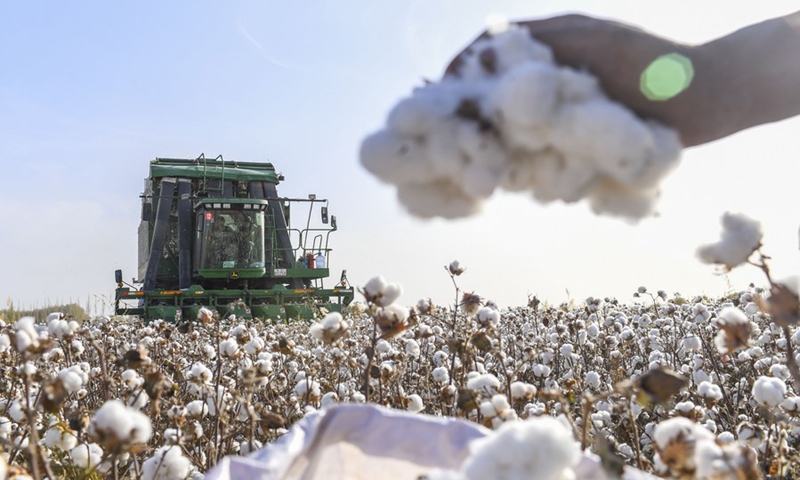
China’s Xinjiang region synonymous with cotton is deeply entangled in controversy, raising ethical and economic questions that reverberate throughout the global supply chain, including impacting India's cotton trade.
Xinjiang's dominance in Chinese cotton production
Xinjiang accounts for a staggering proportion of China's cotton output. Recent estimates suggest over 80 per cent of China's cotton originates from Xinjiang, with the region producing around 5 million tonnes annually. This dominance is driven by several factors like favorable climate, as Xinjiang's dry climate and ample sunshine create optimal growing conditions for cotton. The Chinese government has heavily invested in Xinjiang's cotton industry, providing subsidies and infrastructure development. And large-scale farms in Xinjiang have readily adopted mechanized harvesting, increasing efficiency and output.
In fact, Xinjiang's cotton production has significantly impacted China's overall cotton industry. First it has help in reducing imports as China, once a major cotton importer, has seen its import dependence decrease due to Xinjiang's production surge. This has direct implications for India, a major cotton exporter. On the other hand exports have grown. China has emerged a significant exporter of cotton yarn and finished textile products, leveraging Xinjiang's cotton. This increased competition affects Indian textile exports. Xinjiang cotton also helps China's massive textile industry, feeding domestic demand for apparel and other goods.
India's perspective
While India is a major cotton producer, the dynamics of Xinjiang's production influence its cotton trade with China. First is that it has resulted in lowering exports to China as China's domestic production increases, reliance on Indian cotton imports diminishes. This is reflected in the declining trend of raw cotton exports from India to China. However, India has seen a rise in cotton yarn exports to China. This suggests that despite Xinjiang's cotton dominance, there is still demand for specific yarn varieties and qualities that India can fulfill. The rise of China as a textile exporter, has been led by Xinjiang cotton and this presents competition for India in the global market.
Table: China’s cotton production, imports
|
Year |
China's cotton production (mn tons) |
Xinjiang's Share (%) |
China's cotton imports (mn tons) |
India's cotton exports to China (mn tons) |
India's cotton yarn exports to China ($ mn) |
|
2021 |
5.9 |
85 |
2 |
0.8 |
550 |
|
2022 |
6 |
87 |
1.8 |
0.6 |
680 |
|
2023 |
6.1 |
90 |
1.5 |
0.5 |
720 |
|
2024 |
6.2 |
94.8 |
1.0 (estimated) |
0.4 (estimated) |
750 (estimated) |
(Source: National Bureau of Statistics of China, USDA Foreign Agricultural Service, Ministry of Commerce and Industry India, Texprocil)
Table: China’s leading cotton trading partners
China's exports: Vietnam, Bangladesh, Pakistan, Turkey
China's imports: United States, Brazil, Australia
India's Exports: Bangladesh, Vietnam, China, Pakistan
Uncertainties, controversies arond Xinjiang cotton
There are several controversies around cotton from the Xinjiang region. Allegations of forced labor in Xinjiang continue to cast a shadow over the region's cotton industry. This impacts the ethical sourcing policies of many companies globally, including those in India. Meanwhile trade disputes and political pressures related to Xinjiang cotton create uncertainty in the global market. This can disrupt established trade flows and impact Indian exporters. The environmental impact of cotton production in Xinjiang, including water usage, is also a growing concern. This raises questions about the long-term viability of such large-scale cotton production.
However, the fact is Xinjiang cotton plays a pivotal role in China's domestic textile industry and holds significant sway in the global cotton market. This has direct and indirect consequences for India's cotton trade, impacting its exports of raw cotton and yarn to China. While India continues to be a significant player in the global cotton market, navigating the complexities arising from Xinjiang's production, including ethical concerns and geopolitical tensions, remains crucial for India's cotton industry.

